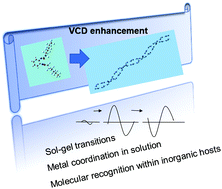A new horizon for vibrational circular dichroism spectroscopy: a challenge for supramolecular chirality
Abstract
Vibrational circular dichroism (VCD) spectroscopy is an extension of circular dichroism spectroscopy into the infrared and near-infrared regions where vibrational transitions occur in the ground electronic state of a molecule. The method offers the advantage of studying the chiroptical properties of a wide range of molecules in non-crystalline states. However, because of the smallness of the signals, one measurement requires several hours to yield reliable results. Accordingly, its targets were limited to a stable molecule in a solution. To overcome this difficulty, our group applied the VCD method to supramolecular systems. The work was launched based on the finding that the VCD signal remarkably enhances when low-molecular mass gelators form gels. By analysing a number of well-resolved VCD peaks, the detailed conformation of a component molecule was deduced. This provided a clue to elucidating the molecular organization in supramolecular architectures. Our final goal was to clarify the route from microscopic molecular chirality to supramolecular chirality. For this purpose, a time-step VCD measurement method was developed for the in situ monitoring of the progress of chirality amplification.

- This article is part of the themed collections: PCCP Emerging Investigators and PCCP Perspectives


 Please wait while we load your content...
Please wait while we load your content...